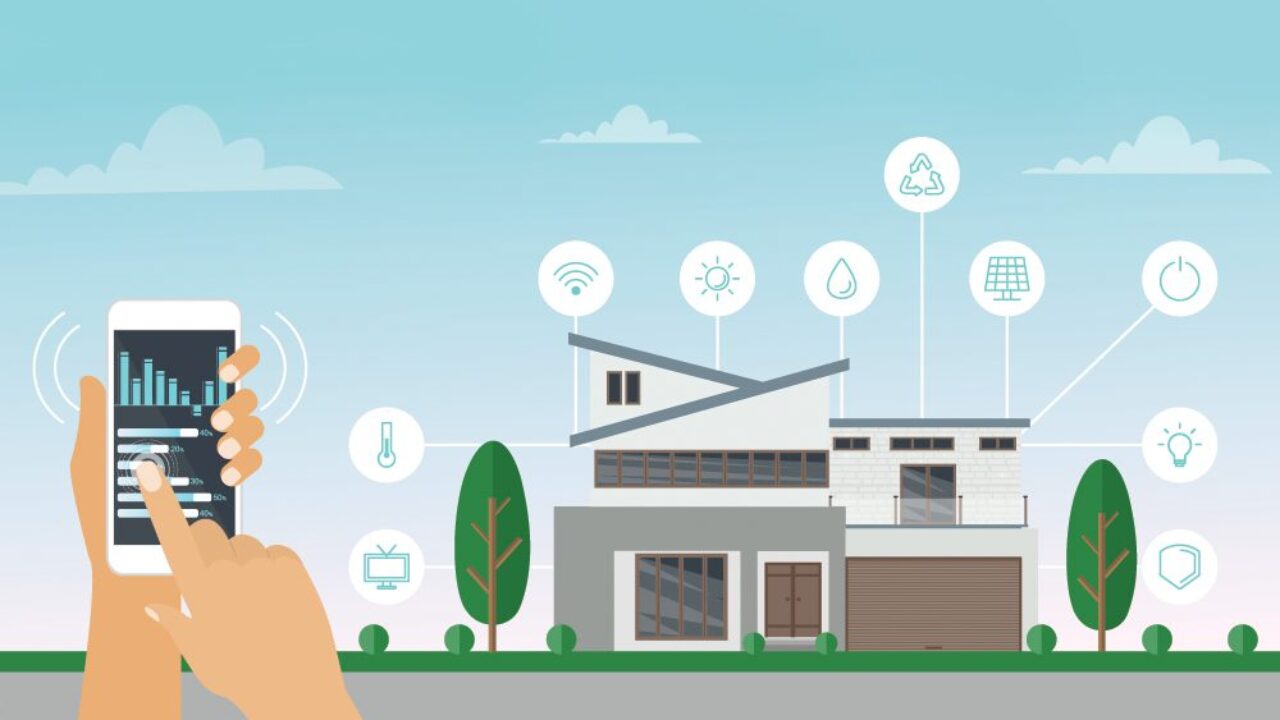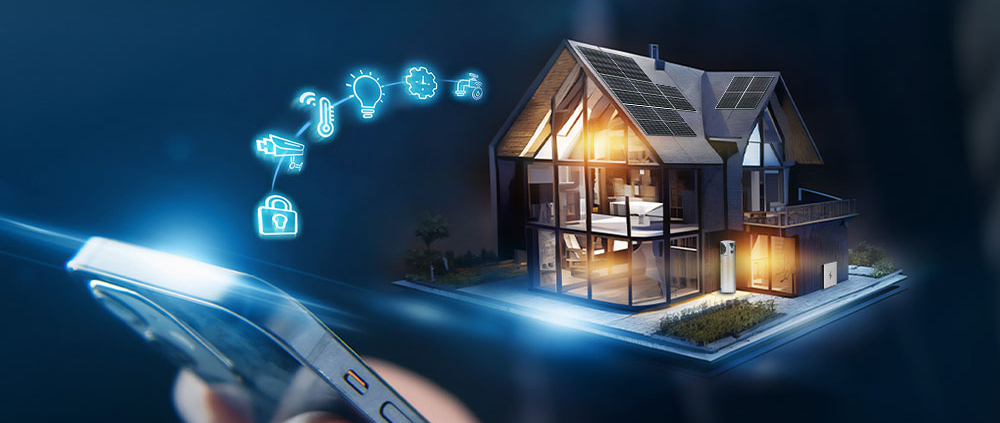As sustainability continues to be a focal point for homeowners, setting up a green and energy-efficient smart home is becoming an increasingly popular trend. Leveraging smart technology provides convenience and security and contributes significantly to reducing energy consumption and lowering your carbon footprint. In this compare guide, we’ll guide you need to know about setting up an eco-friendly smart home, including the essential devices, features, and best practices to maximize energy efficiency.
Why Opt for a Green Smart Home?

A green smart home integrates smart technology with eco-friendly practices, allowing you to automate your home while minimizing energy waste. Here are a few compelling reasons to invest in a sustainable smart home:
- Cost Savings: Smart homes have devices that help monitor and control energy usage, leading to lower utility bills.
- Reduced Carbon Footprint: By minimizing waste and optimizing energy use, a green smart home contributes to a healthier environment.
- Increased Property Value: Homes with energy-efficient systems and smart technologies are in high demand, boosting your home’s resale value.
- Improved Comfort and Convenience: Automation and smart controls provide a seamless and enjoyable living experience, while also enhancing the efficiency of your home.
Essential Components of a Green Smart Home
To achieve a green and energy-efficient smart home, consider integrating the following components:
- Smart Thermostats
- Energy-Efficient Lighting
- Smart Power Strips and Outlets
- Solar Panels and Renewable Energy Systems
- Energy Monitoring Systems
- Smart Appliances
- Efficient HVAC Systems
- Water Conservation Devices
Let’s explore each of these components in detail.
1. Smart Thermostats: Regulate Temperature Efficiently
A smart thermostat is a critical component of any energy-efficient home. Unlike traditional thermostats, smart versions can be programmed to adjust temperatures automatically based on your schedule and preferences. Here’s how they contribute to energy efficiency:
- Energy Savings: Smart thermostats can reduce heating and cooling costs by learning your routines and adjusting temperatures when you’re away.
- Remote Control: Control your home’s temperature from anywhere using a smartphone app, ensuring that energy isn’t wasted when you’re not home.
- Integration with Other Devices: Smart thermostats can sync with other smart home devices, like sensors and HVAC systems, to optimize performance.
Best Picks:
- Nest Learning Thermostat: Adjusts automatically and has an eco mode for energy-saving.
- Ecobee Smart Thermostat: Comes with room sensors to detect occupancy and temperature differences.
Tips for Setup:
- Install the thermostat in a central location, away from direct sunlight and windows.
- Set up temperature schedules to align with your daily routine for maximum efficiency.
2. Energy-Efficient Lighting: Brighten Up Responsibly

Lighting accounts for a significant portion of your home’s electricity use. By switching to energy-efficient lighting, such as LED bulbs and smart lighting systems, you can drastically cut down on your energy consumption.
- LED Bulbs: These consume up to 75% less energy than traditional incandescent bulbs and last longer, reducing both your energy costs and waste.
- Smart Lighting Systems: These can be programmed to turn off when not in use or dim automatically based on natural light levels.
Best Picks:
- Philips Hue Smart Bulbs: Offers customizable lighting with smart scheduling features.
- LIFX Smart Lights: Works without a hub and can be controlled via voice commands.
Tips for Setup:
- Use motion sensors in rooms where lights are often left on, such as bathrooms and hallways.
- Implement dimmer switches to adjust light levels based on your needs and reduce energy usage.
3. Smart Power Strips and Outlets: Eliminate Phantom Power
Even when turned off, many electronic devices continue to draw power. This “phantom” or “standby” power can account for up to 10% of your household’s energy usage. Smart power strips and outlets can help mitigate this issue.
- Smart Power Strips: Automatically cut power to devices when they’re not in use.
- Smart Outlets: This allows you to control and monitor power usage remotely through a smartphone app.
Best Picks:
- Kasa Smart Plug: Offers easy scheduling and remote control.
- Belkin Conserve Power Strip: Cuts power to devices that are in standby mode.
Tips for Setup:
- Use smart power strips for entertainment systems and computer setups, where multiple devices often remain plugged in.
- Set schedules to turn off power when you typically leave the house or go to bed.
4. Solar Panels and Renewable Energy Systems: Go Green with Clean Power
One of the most impactful steps towards creating a green home is integrating renewable energy sources like solar panels. Solar panels harness the sun’s energy to power your home, reducing reliance on non-renewable energy sources.
- Solar Panels: Convert sunlight into electricity, lowering your utility bills and providing a renewable energy source.
- Solar Water Heaters: Use solar energy to heat water, further reducing your energy consumption.
Best Picks:
- Tesla Solar Panels: High-efficiency panels with sleek designs.
- SunPower Solar Panels: Known for their durability and performance.
Tips for Setup:
- Install panels in a location that receives maximum sunlight, typically the roof.
- Consider pairing solar panels with a home battery system, like the Tesla Powerwall, to store excess energy for later use.
5. Energy Monitoring Systems: Track and Optimize Your Usage
Understanding your home’s energy usage is crucial to making it more efficient. Energy monitoring systems provide real-time data on your electricity consumption, helping you identify wasteful habits and optimize usage.
- Smart Meters: Track your total energy usage and can help you understand peak consumption times.
- Home Energy Monitors: Provide detailed insights into the power usage of individual devices and appliances.
Best Picks:
- Sense Home Energy Monitor: Offers real-time tracking and alerts for unusual spikes in usage.
- Emporia Vue: Monitors individual circuits for a comprehensive energy overview.
Tips for Setup:
- Install the monitor near your electrical panel for accurate readings.
- Use the data to identify high-usage devices and adjust your habits accordingly.
6. Smart Appliances: Upgrade for Efficiency

Smart appliances, including refrigerators, washing machines, and dishwashers, are designed to be more energy efficient than their traditional counterparts. They use advanced technology to optimize their functions, reducing power consumption without sacrificing performance.
- Smart Refrigerators: Adjust cooling settings based on usage patterns and can alert you if the door is left open.
- Smart Washing Machines: Use less water and energy by adjusting wash cycles based on the load.
Best Picks:
- LG Smart Refrigerator: Features efficient cooling and energy-saving modes.
- Samsung Smart Washer: Offers eco-friendly wash cycles and remote control.
Tips for Setup:
- Enable eco modes and energy-saving features on all smart appliances.
- Schedule appliances to run during off-peak hours to reduce electricity costs.
7. Efficient HVAC Systems: Optimize Heating and Cooling
Heating and cooling are major contributors to energy usage in most homes. A smart HVAC system can help you maintain a comfortable temperature while optimizing energy efficiency.
- Smart Vents: Automatically open or close to regulate airflow based on room temperature.
- Zoned HVAC Systems: This allows you to control the temperature in different areas of your home independently, reducing waste.
Best Picks:
- Keen Home Smart Vents: Work with smart thermostats to provide optimal airflow.
- Honeywell Zoned HVAC System: Offers customizable heating and cooling options.
Tips for Setup:
- Use room sensors to monitor temperatures and adjust vents accordingly.
- Regularly maintain your HVAC system to ensure peak efficiency.
8. Water Conservation Devices: Save Water and Energy
Smart water management is essential for a green home. Smart irrigation systems, faucets, and water heaters can help you conserve water, reducing both your utility bills and environmental impact.
- Smart Irrigation Systems: Adjust watering schedules based on weather data and soil moisture levels.
- Low-Flow Fixtures: Reduce water usage without sacrificing performance.
Best Picks:
- Rachio Smart Sprinkler Controller: Adapts watering based on local weather forecasts.
- Moen Smart Faucet: Provides precise control over water usage.
Tips for Setup:
- Install low-flow fixtures in bathrooms and kitchens.
- Use a smart sprinkler system to avoid overwatering your lawn.
Setting up a green and energy-efficient smart home may seem like a daunting task, but by making gradual changes and investing in the right technology, you can create a sustainable living space that benefits both the environment and your wallet. By incorporating smart thermostats, efficient lighting, renewable energy sources, and other eco-friendly devices, you’ll not only enjoy a more comfortable and automated lifestyle but also significantly reduce your carbon footprint. Start with small upgrades, monitor your progress, and watch as your home transforms into an energy-saving powerhouse.



